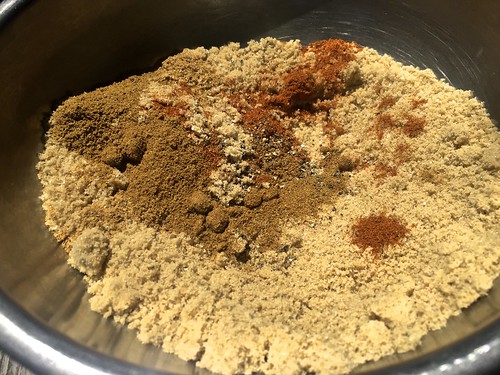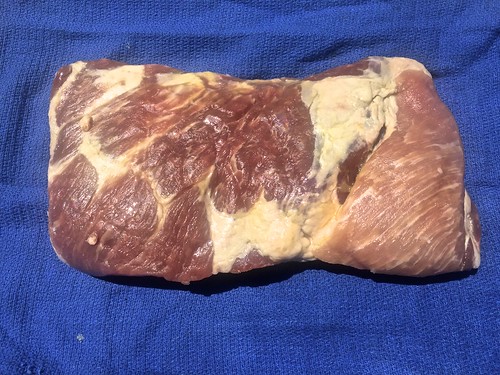For today I'm going light on the meat and heavy on the vegetables and aromatics. The portion for each person (pictured below) uses only one chicken leg or thigh and one pork sausage. That small amount of animal protein will add a large amount of flavor that will grab on to the vegetable flavors and bundle them into umami deliciousness.
Vegetables You Love and one Chicken Leg (or Thigh) and one Sausage Per Person
Sautéing the vegetables, chicken and sausage in seasoned olive oil adds flavor by caramelizing the outside. That lovely browning also removes some of the water, concentrating flavors.
The dish cries out for a starch. Since the recipe will create a sauce, serve the ragout with dumplings, steamed rice (brown or white), pasta or large croutons.
Pork sausage is best because the fats add more flavor than other sausages. For those who want to avoid pork, the sausage is certainly optional.
Skin on the chicken adds flavor.
The dish can be prepared ahead, even the day before and reheated.
Use cabbage, broccoli, asparagus, English peas, spinach, celery, corn kernels, quartered Brussel sprouts, green beans, slow roasted tomatoes finely chopped or any other vegetables you enjoy. The vegetables should have a crisp quality, so avoid over cooking. Leafy vegetables will cook more quickly, so delay adding them until the end or, if reheating, add those just before serving.
Only use green cabbage. Red cabbage will discolor the broth. Savoy cabbage has more delicate leaves and more flavor than does green cabbage.
Time to prepare: 20 minutes
Time to cook: 40 minutes
Total time: 60 minutes
Ingredients
4 large chicken legs or thighs, skin on, washed, pat dried
4 Italian pork sausages, washed, pat dried, cut into 1" rounds
1 large yellow onion, root and stem ends, outer two layers removed, washed, pat dried
4 large carrots, washed, root and stem ends, outer skin removed
2 cups green cabbage, preferably Savoy
3 cups mushrooms, preferably Shiitake, cleaned, pat dried, end of stems and dirt removed, thinly sliced
1 bunch spinach, washed to remove grit, drained, stems removed from leaves and finely chopped
1 clove garlic, washed, skin removed, finely minced (optional)
2 tablespoons extra virgin olive oil
Sea salt to taste
Freshly ground black pepper to taste
Pinch cayenne (optional)
Directions
If using large cabbage leaves, separate the delicate part of the leaves from the thick rib. Finely chop the rib into small bits. The delicate leaves and the finely chopped ribs will be cooked at different times.
Heat olive oil in large pot. Season with a dusting of sea salt, black pepper and cayenne (optional). Add chicken legs or thighs. Remove when lightly browned on both sides.
Add sausage rounds. Brown as with the chicken and remove.
Sauté onions, finely chopped spinach stems, finely chopped cabbage ribs and mushrooms until softened. Add browned chicken parts. Cover with water. Cover pot and simmer 30 minutes or until chicken is tender. Check every ten minutes and add water if needed to keep covered.
Add browned sausage rounds, spinach leaves, cabbage leaves, carrot rounds, garlic (optional) and any other similar vegetables, like Italian parsley, broccoli or celery. Add water to cover if needed. Cover pot and simmer 10 minutes.
Add English peas if using in the last 2 minutes.
Taste and adjust seasoning if needed. If broth needs more concentrating, return the pot to high heat and reduce liquid until flavorful.
Serve hot with dumplings, steamed rice (brown or white), pasta or large croutons.











































